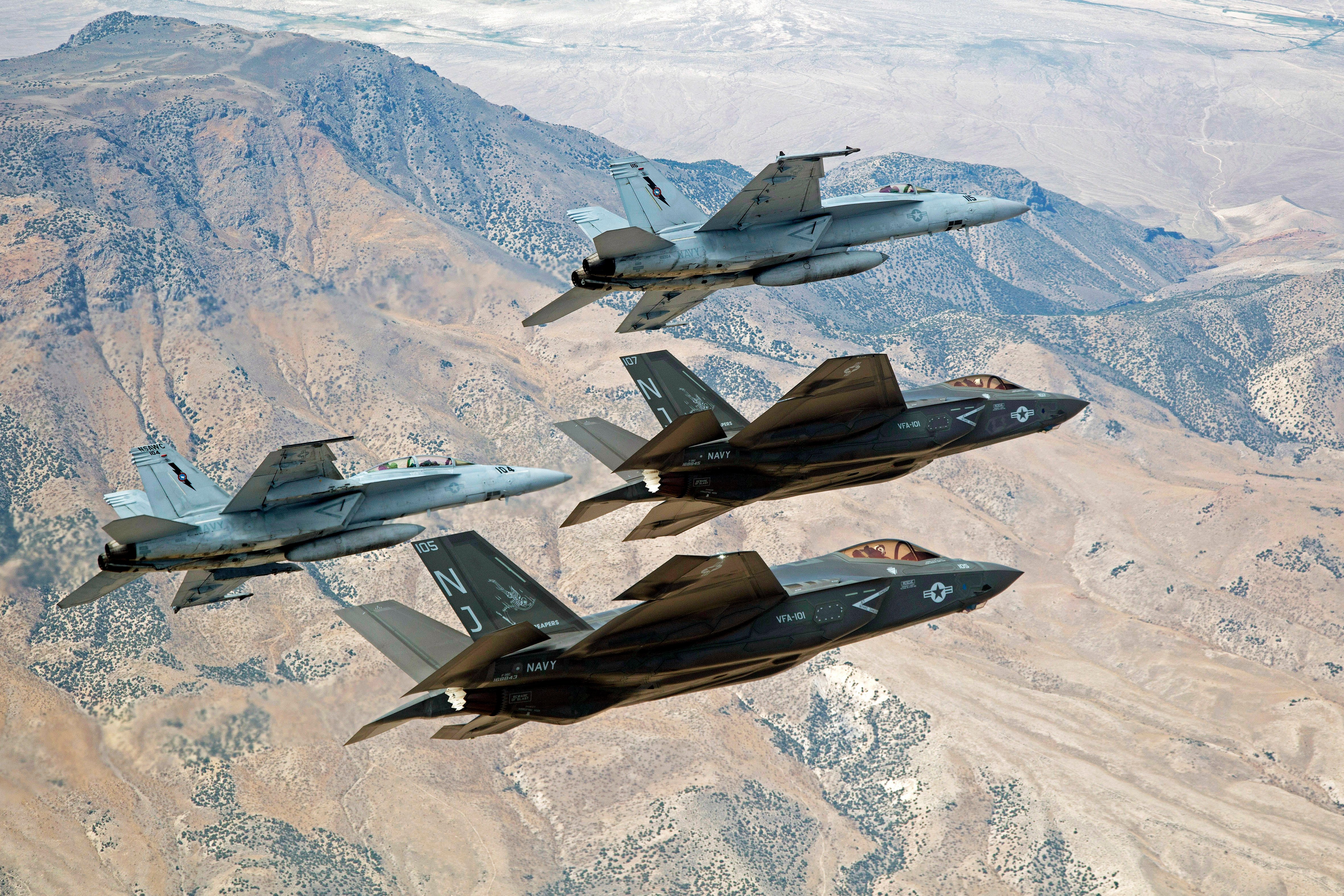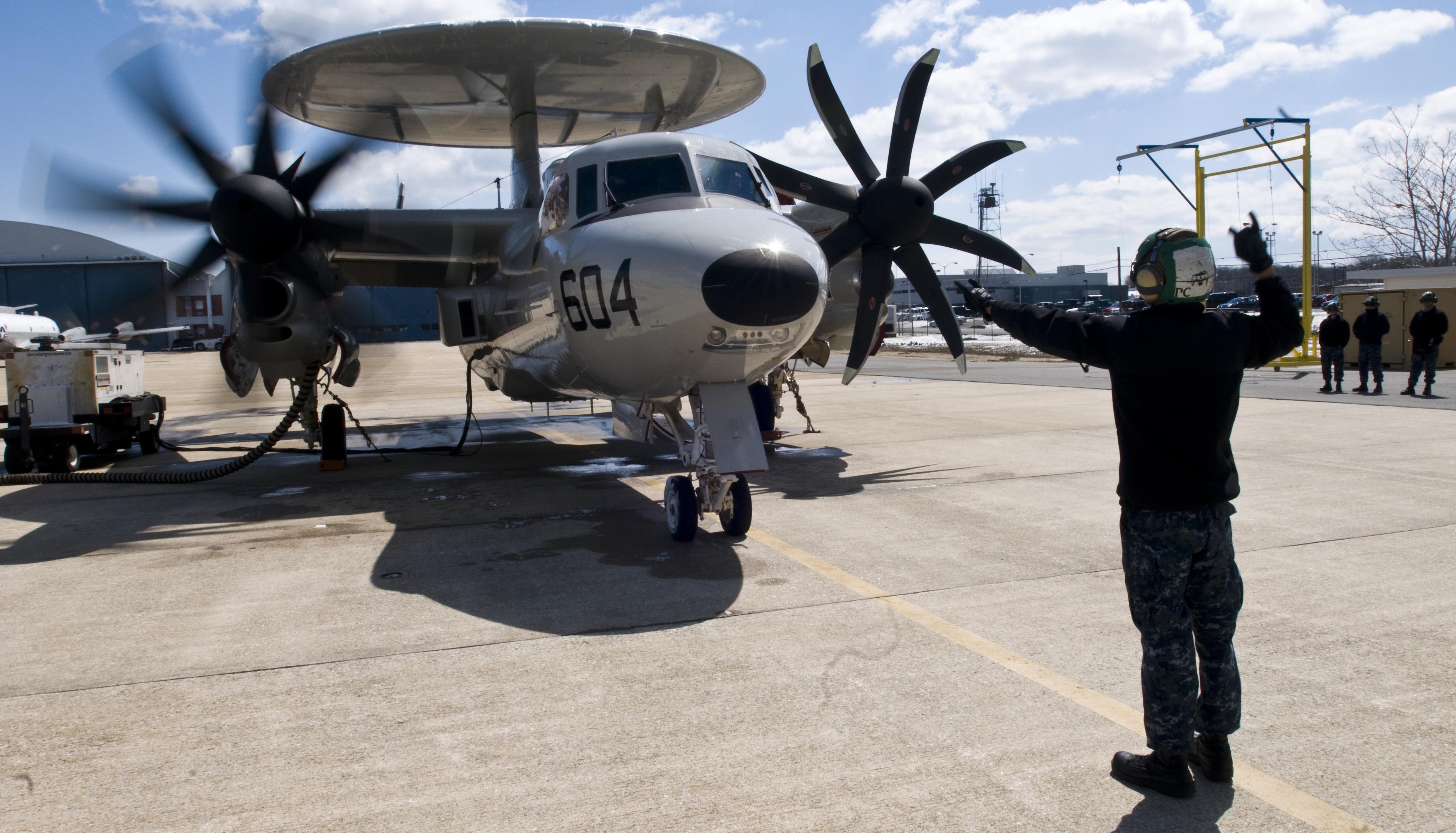
WASHINGTON, D.C. — The Navy has begun integrating its newest airplanes into the air wing and joint forces during training and finding that these platforms, including the EA-18G Growler and F-35C Joint Strike Fighter, are extending the range and increasing the sophistication of operations, the Navy’s Air Boss said.
Commander of Naval Air Forces Vice Adm. Mike Shoemaker said recent testing around the country and particularly at Naval Air Station Fallon in Nevada have been so successful that the Navy had to incorporate virtual and constructive training opportunities because the planes are pushing the boundaries of available air space and electromagnetic spectrum.
The service opened its Air Defense Strike Group facility there and has already run four integrated air defense exercises with F/A-18E/F Super Hornets, E-2D Advanced Hawkeyes and surface ship counterparts, and the live/virtual/constructive training opportunities are set to expand at Fallon and at the fleet concentration areas, Shoemaker said at an event cohosted by the Center for Strategic and International Studies and the U.S. Naval Institute.

Exercises at Fallon and elsewhere with joint forces have only increased demand for the Growler, which is the only dedicated electronic attack plane in the Defense Department’s inventory. Tests with the Growler, Joint Strike Fighter and the F-22 have proven joint forces “clearly value the contributions of that Growler, what it brings to that fight, so they remain in high demand.” The upcoming addition of the Next Generation Jammer pod will only make the plane “more formidable,” Shoemaker said.
As for F-35C integration, Shoemaker said the planes have come to Fallon a few times for testing.
“That’s been a very unique opportunity to start that fourth and fifth (generation) integration and understand what that really brings from a capability perspective,” he said.
“Flying with Rhino (Super Hornet) and Growler, we understand the low-observable penetration capability of F-35, but when we look at the ability to fuse data, put it all together, both active and passive sensors, and share that with the other platforms in the air wing and joint force, give us long-range combat ID – that’s where I think the true value you’ll see in F-35.”In Naval aviation will rely on the JSF and Super Hornet into the 2030s, and Shoemaker said the future looks bright with these two platforms.
“When you pair those two up together I think they bring a very good complement in terms of, if you call it a high-low mix and the low part of that mix is Super Hornet, we’re in a good spot,” he said.
The Air Boss noted the long-range ID aspect of F-35 but said the service is building sensors and weapons to bring this extended reach to other planes too.
“The key is the long-range ID, being able to ID at range in both a surface and air context – and that’s where the sensors and our integration of both manned and unmanned, joint, space, all domains, and really the networks that will bring all that information together and share it” will be important for future operations and extending the reach of the air wing well beyond what previous generations could have done.
Shoemaker noted in his speech that outside the air wing the Navy’s transition from the P-3 Orion to the P-8A Poseidon is about halfway complete, with all East Coast units having transitioned. The P-8 is now operating in the Western Pacific and in Europe, with a two-plane detachment also having deployed to Bahrain recently.
“They’re doing a good job as we prioritize to those (areas of responsibility) that need (anti-submarine warfare) and maritime domain awareness,” he said.
Three squadrons have upgraded from the E-2C to the E-2D, with the transition happening “not as fast as I’d like, but we’re moving in the right direction.” The new plane had its first deployment aboard USS Theodore Roosevelt (CVN-71) last year, and that same squadron, the Tigertails of Carrier Airborne Early Warning Squadron (VAW) 125, will move to Japan early next year to join Carrier Air Wing 5. That move will bring all the newest type/model/series to the Pacific, Shoemaker said, with the E-2D serving as the “quarterback” of a sophisticated network of carrier-based and land-based Navy and joint assets.





